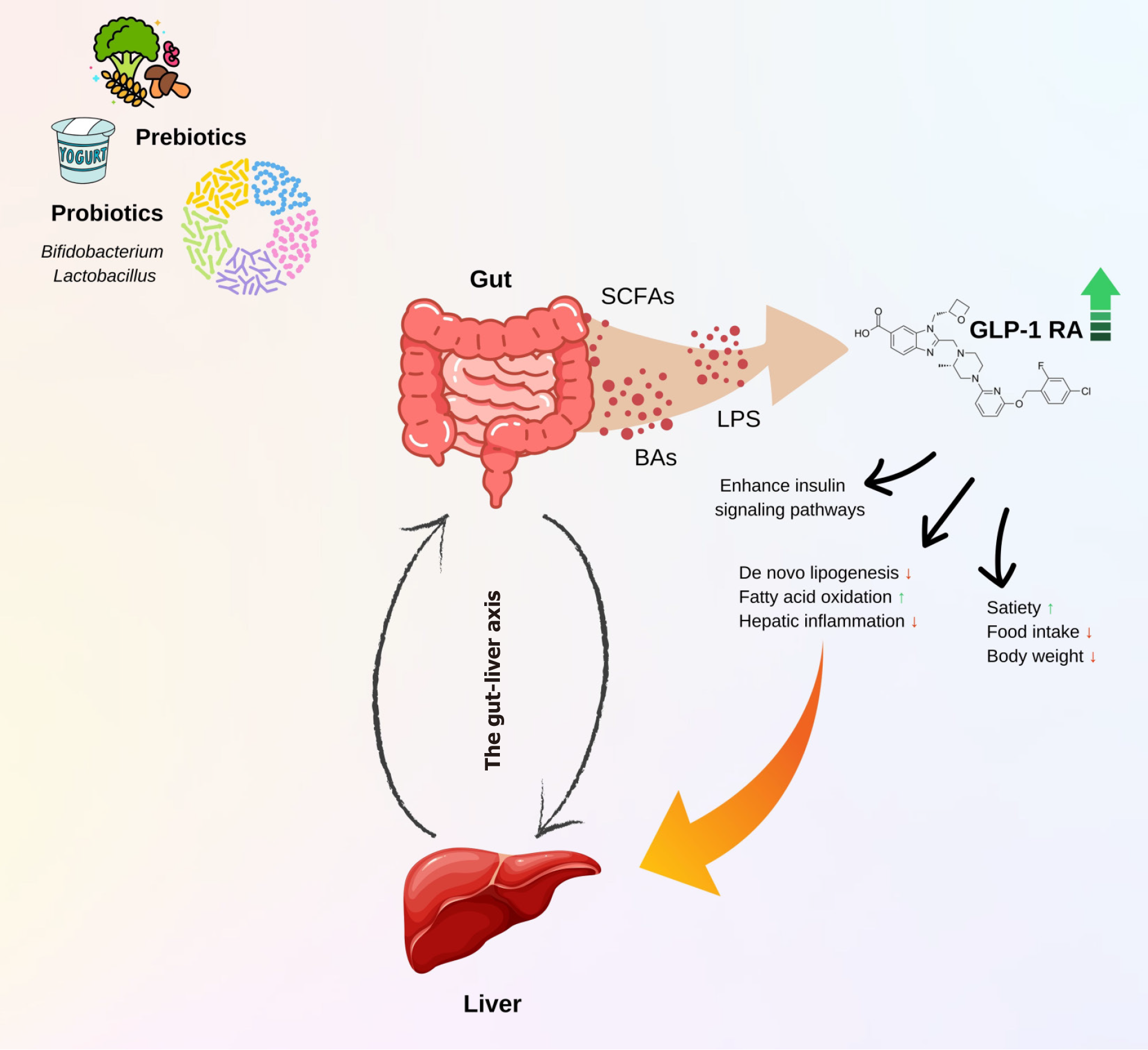Copyright
©The Author(s) 2024.
World J Gastroenterol. Nov 21, 2024; 30(43): 4682-4688
Published online Nov 21, 2024. doi: 10.3748/wjg.v30.i43.4682
Published online Nov 21, 2024. doi: 10.3748/wjg.v30.i43.4682
Figure 1 Interaction between the gut microbiota, glucagon-like peptide-1 receptor agonists, and dietary interventions in the management of metabolic associated steatotic liver disease.
The intake of certain diets produces dietary fibers, and the consumption of probiotics may affect the function and composition of the gut microbiota. This process supports the production of beneficial metabolites, such as short-chain fatty acids (SCFAs), bile acids (BAs), and lipopolysaccharides (LPSs) by gut microbiota, which in turn promote glucagon-like peptide-1 (GLP-1) production. GLP-1 receptor agonists (RAs) play a role in enhancing insulin secretion, improving insulin signaling pathways, increasing satiety, promoting weight loss, reducing de novo lipogenesis, stimulating fatty acid oxidation, and reducing hepatic inflammation, collectively improving liver homeostasis. The figure highlights the integrated approach to managing metabolic dysfunction-associated steatotic liver disease (MASLD) through gut microbiome modulation and GLP-1 RA therapy.
- Citation: Guney-Coskun M, Basaranoglu M. Interplay of gut microbiota, glucagon-like peptide receptor agonists, and nutrition: New frontiers in metabolic dysfunction-associated steatotic liver disease therapy. World J Gastroenterol 2024; 30(43): 4682-4688
- URL: https://www.wjgnet.com/1007-9327/full/v30/i43/4682.htm
- DOI: https://dx.doi.org/10.3748/wjg.v30.i43.4682









